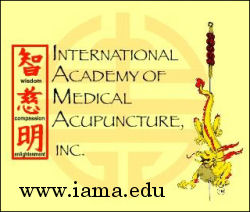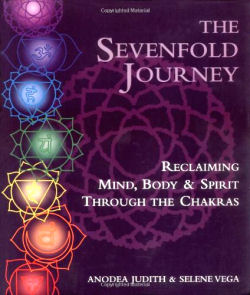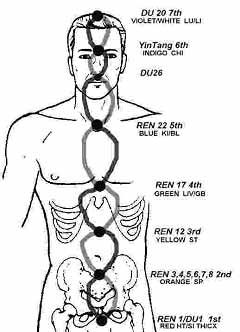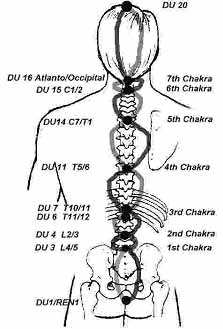Acupuncture & TCM Articles

Acupuncture Articles
by John A. Amaro L.Ac., Dipl.Ac.(NCCAOM), DC
 Dr. Amaro is an internationally known author, lecturer and practitioner beginning his practice of Acupuncture and Chiropractic in 1971. He has led 13 diplomatic Acupuncture study tours of The People's Republic of China escorting more than 500 doctors and practitioners. He has personally studied Acupuncture in nine separate Asian nations. Dr. Amaro is an internationally known author, lecturer and practitioner beginning his practice of Acupuncture and Chiropractic in 1971. He has led 13 diplomatic Acupuncture study tours of The People's Republic of China escorting more than 500 doctors and practitioners. He has personally studied Acupuncture in nine separate Asian nations.
He has received Certification in Acupuncture through the Columbia Institute of Chiropractic in 1973. This was one of the first Acupuncture postgraduate education programs for physicians in North America commencing in 1972.
He has been certified by the Waseda Acupuncture College in Tokyo, Japan in 1974 and graduated from the Chinese Medical Institute, Kowloon, China in 1976. He had previously taken postgraduate studies at the Tai Chung Medical School Taipei, China 1973.
"The Caduceus, Chakras, Acupuncture and Healing" Part II
John A. Amaro L.Ac., Dipl.Ac.(NCCAOM), DC
In Part I of this article “Acupuncture Today May, 2003’ the historical perspectives and healing corollaries of the medical caduceus represented by the double coiled serpent as it relates to the chakras and acupuncture was explored. If you missed Part I, see www.acupuncturetoday.com go to “Columnists’ see “Amaro’ scroll down thru the archive list.
As I was preparing Part I, I found myself having great difficulty trying to encapsulate the information into a format, which is consistent with this publication. The topic of the Caduceus and Chakras as it relates to Acupuncture and Healing may very well be one of the most challenging topics I have endeavored to report. This is only because of the extreme amount of knowledge which makes up this topic through the philosophies of dozens of nations both ancient and contemporary. I soon realized what I have learned over the years and practice clinically on this topic could very well fill an entire book.
Having been a student of the Asian Healing Arts for over three decades I have observed first hand healing principles in nine separate Asian nations. However, as we can all proclaim, my studies have taken me to a variety of nations and historical times I have not personally observed, yet have still formed my education. This was most recently brought to mind as the world has had its focus on the Middle East specifically Iraq, Syria, Turkey, Iran, Afghanistan, Pakistan and India with the current events of 2003.
Most practitioners of Acupuncture and Asian Medicine in the America´s, Australia and Europe have a tendency to regard this style of healing as having its originations in China. However, when one explores the numerous healing disciplines from scores of nations that have contributed to the development of Traditional Chinese Medicine over the centuries, the knowledge is humbling to say the least. These contributions have occurred from all of the above-mentioned Middle Eastern nations not to mention ancient, Greece and Rome. The healing philosophies of Persia and India had an extremely strong influence in developing the philosophical concepts that created the healing principles of Tibet and Nepal.
The Sevenfold Journey: Chakras
 
The primary nationality comprising China´s westernmost regions has a strong medical tradition that combines Islamic (Unani) medicine with Ayurvedic medicine of India along with Traditional Chinese Medicine. The Hui or Muslim Chinese are most heavily concentrated in the north and western China. Much of their medicine has at it root a very strong Arabic influence introduced when the Arabs came into Western China in the ninth century. As the Arabs conquered the Mediterranean what they gathered from the Greeks in regard to medicine became a vital part of the medicine and philosophies of the entire Middle East.
In Part I we drew a strong corollary between the double-coiled snakes around a single shaft and its relationship of what was described as the spinal tracts of Indian medicine referred to as the “Ida’, “Pingala’ and “Sushumna’ which comprise the Kundalini or the power centers of the body. Refer to Part I for illustrations. Every time the Ida and Pingala represented by the snakes in the caduceus cross one another, the crossing forms what is referred to as a “Chakra’ when applied to the body. These Chakras are historically represented on the front of the body and correlate with what we know in acupuncture as important and vital acupoints.
The study of the Chakras is a topic which goes well beyond the reaches of this publication. I would urge the reader to visit their local book dealer for a variety of books devoted to the significance of the Chakras. You may contact me at the e-mail address at the end of this article for specific sources. It is imperative however, that those involved in Asian Medicine explore the importance of the Chakra´s in its creation and distribution of the energetic field of the body.
Anyone who has ever studied Asian medicine is familiar with the ancient concepts of the Five Elements as it forms one of the most practical, clinical and historical foundations of Acupuncture. The relationships between the Elements, the meridians they represent and general factors affecting the body are time honored. There is a very strong relationship between the Chakras and the Five Elements in Western, Tibetan, Nepalese and even Southern Chinese acupuncture.
Examine Figure #1 and Figure #2. Please note that the Chakras on the anterior body indicated by the crossing of the two tracts have a specific relationship to a specific acupuncture point and vibratory color namely 7th Chakra- DU 20-violet/white, 6th Chakra-YinTang-Indigo, 5th Chakra-Ren 22-blue, 4th Chakra-Ren 17-green, 3rd Chakra-Ren 12-yellow, 2nd Chakra-Ren 3,4,5,6,7,8-orange, 1st Chakra-Ren1-red. Note that each Chakra has a particular relationship to a Yin and Yang coupled set of meridians. For example, 5th Chakra-Ren 22-Bl/KI. Also note each Chakra is associated with a particular color such as the 5th Chakra isassociated with the color “blue’. This is consistent with the colors associated with the elements in Five Element acupuncture. The meridian correlation to a Chakra is based upon the color associated with the Five Elements. For example, Green is associated with the Wood Element, the wood element is associated with LIV/GB meridian.
 
Copyright 2003: Dr. John A. Amaro and The International Academy of Medical Acupuncture Inc.
In Figure #2 on the posterior of the body, please note each Chakra has a specific relationship to a particular vertebral level. For Example the 5th Chakra is connected with DU 14 between C7/T1. The meridian and color relationship as in the anterior body is the same for the posterior body.
To utilize one of the most powerful healing affects in ancient Western Chinese, Persian and Indian Acupuncture, make a correlation between the involved meridian and the associated Chakra, utilize acupoint locations on the anterior (Yin) and posterior (Yang) side of the body related to the involved Chakra.
One of my favorite clinical stories of this concept relates to a gentlemen who advised me of his son-in-law who lives in Paris. The son-in-law was suffering from extreme low back pain with radiating sciatica. The pain was excruciating. After exhausting all forms of “alternative’ medicine to include acupuncture and chiropractic, the patient was unrelieved and was scheduled for decompression laminectomy. Prior to going into the hospital for surgery, the patient was advised of a “healer’ who practiced on the third floor of a building in Paris not far from the patients home. He was convinced he should at least give it one more chance. Upon arriving at the building, he was met with three flights of stairs which the patient navigated slowly and painfully. After explaining the history of the problem, the practitioner simply placed his two overlapped fingers directly on the top of his sternum at the manubrium. After holding this spot for approximately two minutes, the healer leaned away and asked how he felt now. The patient being a busy no nonsense businessman was mortified this was all the practitioner had in mind to do. The patient disgusted with the fact he had just climbed three flights of stairs with considerable pain, turned and in a huff started down the stairs when he reached the first landing, he suddenly turned and went back up to the practitioner demanding to know what he had done to him. The pain that had been so excruciating had suddenly lifted to a very tolerable ache. The patient returned the following day for a follow up treatment which as far as the patients´ pain was concerned, completely resolved the condition. Surgery was cancelled. Two full years have passed with no return of symptoms.
This is an example of this principle in action. Due to the patients´ spinal condition, it was ascertained through acupuncture principles he had an involvement of the Bladder and Kidney meridian. The BL/KI is associated with the Water element that is associated with the color blue. A study of the Chakras will show the 5th Chakra is likewise associated with the vibratory energy of “blue’. Therefore in Five Element/Chakra balancing this action will be taken directly at Ren 22 which is the 5th Chakra.
Since many of the conditions we see clinically are of the musculo-skeletal variety, it behooves us to recognize that muscles, tendons and ligaments are under the influence of the Wood Element that is associated with the meridians of the GB/LIV. These two meridians have its related Chakra located at CV (Ren) 17. One of the most startling clinical responses you can expect is to stimulate CV 17 in any musculo-skeletal-ligamento condition. Likewise it is imperative one take an action on both the Yin as well as the Yang Chakra by stimulating DU 11 between T5/6.
The same is true for the 3rd Chakra as it connects with the Stomach meridian and the Earth Element. It´s posterior Chakra is specifically at the double point of DU7 and DU6 between T10/11 and T11/12. It is imperative to realize that the Earth Element is divided in the fact the 2nd Chakra is likewise associated with the Earth Element, however it is specifically related the Spleen meridian and associated with the color of orange. This entire area from the navel to the symphis pubes constitutes what is known as the “Tan Tien’ or Center of Energy. The Spleen meridian in TCM is responsible for the creation of chi through nourishment.
Those with Metal Element situations affecting LU/LI have major affects by stimulation of the 7th Chakra relating to DU 20 and specific vertebral stimulation at DU16 at the Atlanto/Occipital area. Keep in mind the color associated with the seventh Chakra is violet however, white is likewise associated here as it is the culmination of all the colors. The color of white, is reflective of the Metal Element. DU 20 has a very powerful effect on any condition affecting the Lung or Large Intestine meridian. Academically, it is not a classic point for these meridians but extremely important in Chakra style of acupuncture. Symptoms associated with the Fire Element have shown stunning success by utilizing Ren 1 in the perineum. It can also be reached through the posterior at DU3 between L4/5. As opposed to stimulating Ren 1 in its delicate location, utilizing the Korean Hand point at the base of the hand just distal of the wrist on the palmar surface has shown stellar effects.
The one Chakra which does not have a specific color associated with the Five Elements is the 6th Chakra which is the color of indigo. This becomes a combination of the blue color of the 5th Chakra and the violet of the 7th Chakra. In clinical applications, it has a very strong influence with the Kidney meridian. Just as the 2nd and 3rd Chakra are divided into the color of orange (which does not exist on the Five Elements) for the 2nd Chakra and yellow of the 3rd Chakra. The same thing occurs at the 5th, 6th and 7th Chakra. Consider the Bladder meridian associated with the 5th Chakra and the Kidney at the 6th.
Note how the Ida and Pingala cross at DU 26 however no mention of a Chakra is located here. This is perhaps one of the most powerful points on the body for a variety of conditions which is often overlooked in acupuncture. Most practitioners know this point to be effective in reviving a fainted patient, however, it is extremely powerful for pain and anxiety. It meets all of the criteria of a Chakra in the fact it is at the junction of the crossing Ida and Pingala however it is usually not associated with a Chakra location. DU 26 in my opinion is a landmark acupuncture point. Begin to use it in any pain condition. This point is so powerful, I will have to reserve further comment for an entire article devoted specifically to its application.
Any practitioner who is academically knowledgeable of the Five Elements can utilize some creative imagination and successfully treat hundreds of conditions specifically through the Chakras. Assume a patient visits your clinic with the complaint of macular degeneration. Besides the typical medical approach to this condition, the practitioner will draw a corollary between the eyes and the Liver meridian. This of course would be associated with the color Green whch is the 4th Chakra which has its key point on the Yin side at CV (Ren) 17 and Yang side at DU11 T5/6.
What has shown incredible promise in contemporary acupuncture is the use of Electro Meridian Imaging (EMI) to this application. Upon electronic examination, any time a paired meridian such as BL/KI or LU/LI is involved by being elevated, depressed or split, direct action to the Chakra has shown quicker stabilization of the meridians. This same concept can be applied to AuriculoTherapy (Ear Acupuncture). This is accomplished by discovering the involved paired or single meridian electronically then locating the corresponding ear point. The effect is extremely noteworthy.
When one begins to correlate the various factors which are attributed to the Five Elements such as environmental factors, emotional factors, body parts, senses, tastes etc. and to begin specifically treating both the Yin and Yang Chakra related to that specific condition, it will open up a dimension in acupuncture which will be one of the easiest and most effective techniques one can ever employ.
Be sure to re-read the two articles previously published on Electro Meridian Imaging (EMI). This contemporary method of diagnosis combined with the ancient principles of Acupoint Chakra Balancing will create a new environment in your office which will be rewarded by both increased referrals and financial retribution.
| 